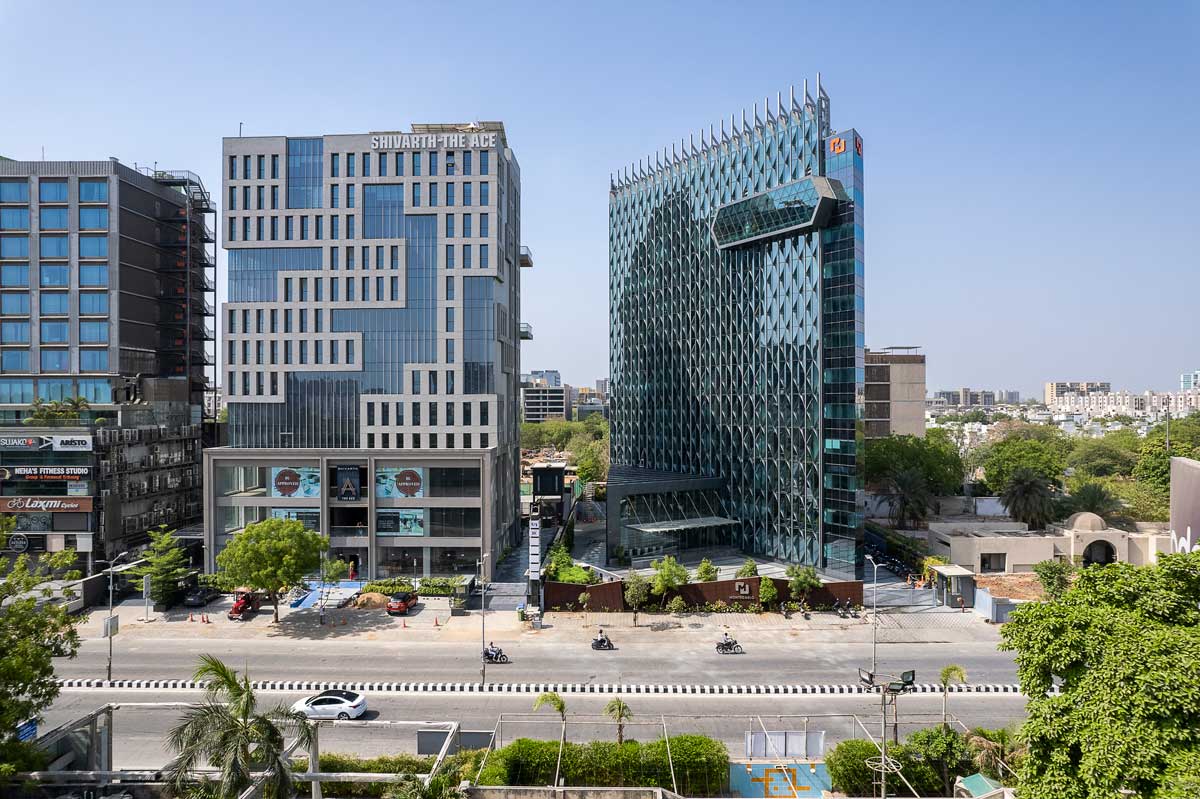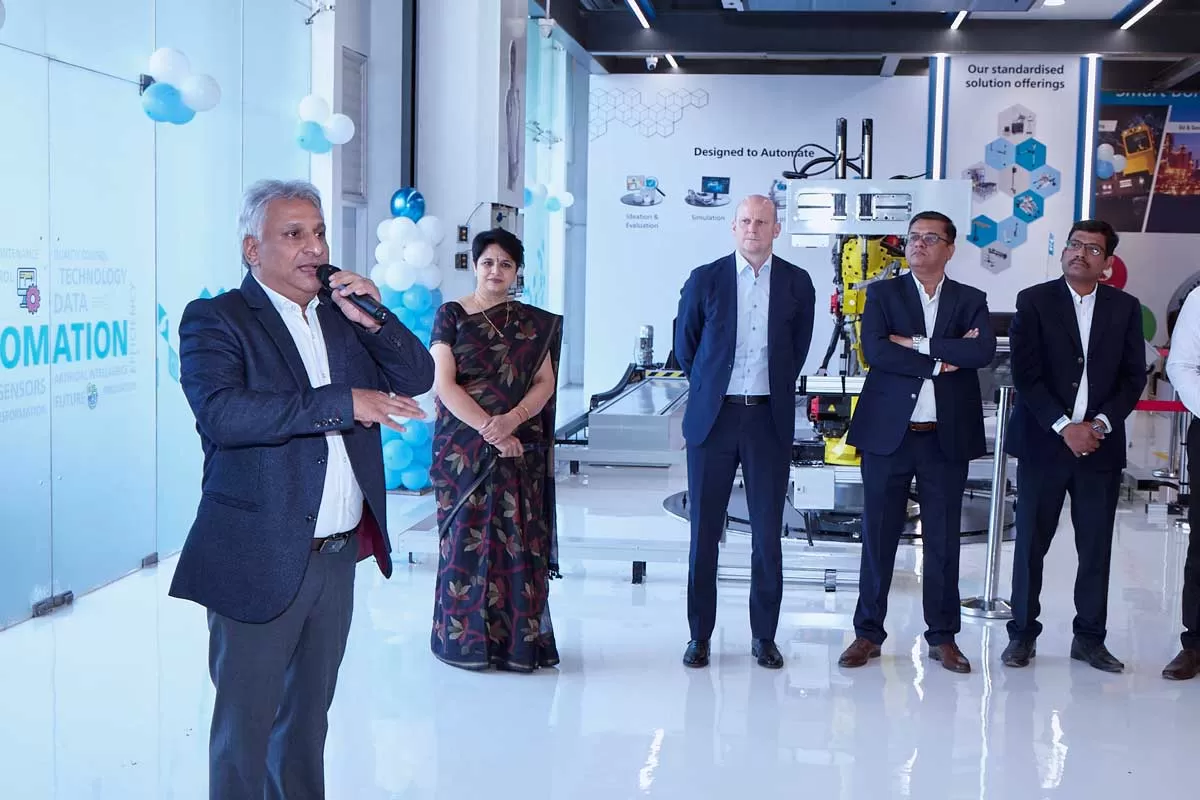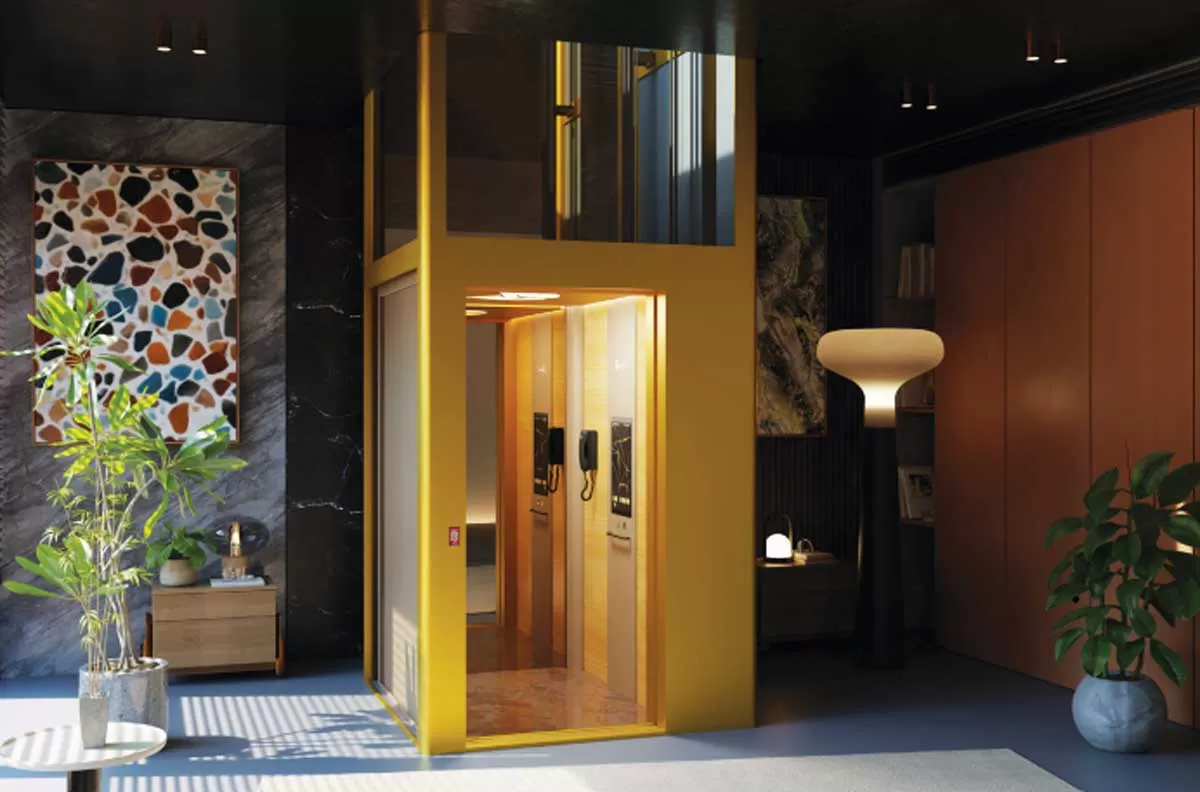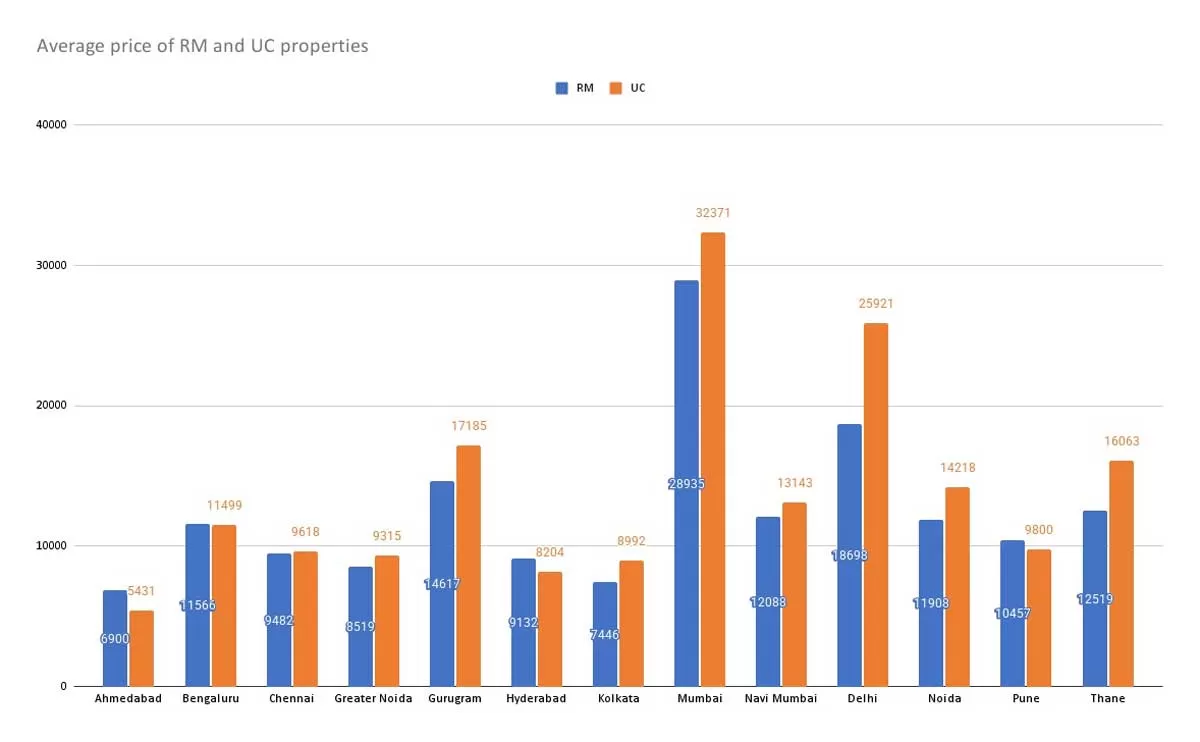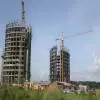Consider these advantages of glass when used in a façade. It serves as a seamless weather barrier owing to its inertness. It effectively (up to 80 per cent) allows daylight to infiltrate interior spaces and daylight is known to improve human productivity in office spaces (by enhancing visual comfort, being responsible for circadian rhythms and offering access to outdoor connectivity). It provides visual transparency to the outdoors such that indoor to outdoor visualisation becomes seamless. It has energy absorption properties that help to convert sunlight into energy. And it is recyclable and reusable, which makes it a major component in green buildings.
In that context, Dr Shivraj Dhaka, Senior Counsellor, Indian Green Building Council (IGBC), Confederation of Indian Industry (CII), opines, “I would say no other material compares to glass; it is irreplaceable. Glass is the most important element of a building. Cutting down on the use of glass in an office building would invariably indirectly cost the occupier more by means of less productive and less healthy employees. So, glass must be used to introduce benefits to the building and its occupants… but wisely, after rigorous calculations and using computer/simulation tools.”
“Considering all the benefits and properties, glass is certainly one of the better sustainable façade options, if used appropriately,” agrees Naveen Thomas, Vertical Head, Developer Spaces, Edifice Consultants. “Very few façade materials can match glass in effectiveness. While materials like bamboo, recycled bricks, recycled plastic and rammed earth construction offer sustainability value, their utilisation is contingent upon factors such as scale, region, design requirements, complexity and buildability.”
Use glass wisely
Glass shouldn’t be used where it may be avoided, cautions Dr Dhaka. “Essentially, glass shouldn’t be used excessively because with light comes heat, and that necessitates consuming energy to cool down the built environment. Glass enhances the visual appeal of a building; however, it should simultaneously contribute to the comfort of occupants, and it shouldn’t contribute to their cost of occupying the building.”
Essentially, “it’s important to optimise the use of glass based on the building’s orientation to effectively capture natural light while minimising heat transmission, because the manufacturing process of glass produces carbon dioxide and nitrogen oxides, emissions the world needs to see less of,” points out Thomas.
“Considering tropical climatic conditions, glass gains more heat from the south, mainly due to sun radiation directly beating glass surfaces,” explains Dr Dhaka. “Hence it should be adjusted proportionately (percentage). Glass can be opened up more in the north, which does not have direct heat; this helps daylight to penetrate to a greater extent.”
Introducing window shades would further significantly reduce the direct heat striking the glass, he adds. “We need architects who can innovatively integrate shades in building designs and developers who use the most energy-efficient glass to ensure our built environment is as green as possible.”
To create more sustainable buildings, Sunita Purushottam, Head, Sustainability, Mahindra Lifespace Developers, proposes drawing on traditional climate-responsive design techniques that have proven effective in tropical climates. “These designs incorporate passive techniques such as deep verandas, openable windows with deep overhangs and vertical shades, movable shading systems like khus curtains, and small window openings with ventilators and fully openable windowpanes,” she explains.
Mahindra Lifespace Developers has effectively implemented these techniques in its projects. Happinest Palghar and Happinest Avadi have openable windows, whereas Mahindra Eden in Bengaluru features windows strategically shaded by vertical and horizontal projections. “Additionally, we carefully consider the wall-to-window ratio to positively impact the environmental performance of a building,” she adds. “We have also been exploring the use of external movable shading systems to minimise solar heat gain and ensure thermal comfort.”
“We endorse the use of high-performance glazing with advanced coatings and technologies, shading and sun control devices such as external louvers, fins or operable shading systems, thermal breaks in the framing system, daylighting design, appropriate building orientation to harness passive solar energy, operable windows or stack ventilation systems, photovoltaic glazing or solar shingles, and smart building technologies and automation to optimise the operation of the glass façade,” says Manish Kumar, Director, TDS Coetus. “We also perform a lifecycle assessment of the glass façade system to evaluate its environmental impact, from manufacturing to disposal.”
Choose the right glass
The excessive use of glass started to trend a few decades ago. To regulate this use (or overuse) and lay down other building guidelines, the Energy Conservation Building Code (ECBC) was introduced in 2007, and further revised in 2017 for more stringent performance goals, explains Dr Dhaka. “The ECBC defines the solar heat gain coefficient (SHGC) for five climatic zones of India in the baseline (maximum 0.27 for non-north and 0.5 for north). So, if ordinary clear glass allows 80 per cent of heat into the room, the special glass necessitated by the ECBC allows in only 27 per cent of heat. The impact of ‘green’ glass on the HVAC load is phenomenal. Green glass should be chosen after analysing various scenarios, applications, requirements, the building typology, etc. Climate-responsive design places a lot of importance on glass.”
“We use performance glass in all our office space developments, the most recent being Prestige Minsk Square, Prestige Tech Pacific and Prestige Tech Park IV, and in our residential complexes such as Kingfisher Towers,” says Javed Shafiq Rao, Senior Vice President, Property Management, Prestige Group. “We recommend low-emissivity
(low-e) coatings glass to lessen the transfer of heat and reduce the HVAC load; solar control glazing to reduce glare, manage the solar heat gain and reduce the HVAC and lighting load; and safety and security glass for windows as well as façades.”
Double or triple glazed units with low e-coating have been widely adopted to regulate heat gain, adds Thomas.
“To ensure the façade is easy to maintain, we propose products with good thermal properties that are easy to install and maintain,” says Amit Singhal, Director, GPM Architects and Planners.
What’s new?
Developments in glass have revolutionised the façade industry. Singhal attributes this to the shape and form of buildings, orientation of façades and building design that helps reduce heat gain through the thermal insulation of roofs and walls. “We are currently experimenting with recently introduced solar films for our new projects, especially for south-facing façades,” he shares.
In today’s context, incorporating building integrated photovoltaics is highly recommended, agrees Thomas. “Adopting façades that help generate electricity from sunlight is both effective and sustainable. Using crystalline photovoltaic glass or amorphous silicon photovoltaic glass on spandrels, as well as on the east, south and west façades, works best.”
There is a growing trend in the use of electrochromic glass, also known as smart glass, or electronically switchable glass, he adds. Electrochromic glass automatically changes opacity and tint to control visible light transmittance and solar heat gain at the press of a button. It can also be controlled through a building management system (BMS), particularly for façades facing the west or south, taking into account sun angles. This helps reduce the HVAC load and enhances energy-efficiency.
At the corporate headquarters of Monte Carlo in Ahmedabad, an Edifice Consultants project, electrochromic glass has been employed on the west elevation and the skylight glazing in the reception area. A glass skylight projects out of the double-heighted reception lobby, supplying ample natural light into the space while tactfully being shaded by the tower itself. The triangulated three-dimensional panels on the northeast façade were fabricated with energy-efficient high-performance glazing technology.
Stunning, and sustainable!
If not glass, what?
Experts weigh in on the alternatives to glass façades.
“Glass may or may not be the most sustainable option for a building façade depending on the project requirements, regional context, climate, thermal and visual comfort, embodied energy and end-of-life handling,” says Sunita Purushottam, Head, Sustainability, Mahindra Lifespace Developers.
“Sustainable design means not only the integration of passive design techniques but also practices that ensure the efficient use of resources and materials,” says Amit Singhal, Director, GPM Architects and Planners.
The façade of the IGBC Platinum-rated multiuse development Unity One Mall in Rohini, Delhi, has been made with glass-reinforced concrete jaali, he shares. Alkali-resistant glass fibres in glass-reinforced concrete ensure a long lifespan, high impact and maintenance strength. For the Mahagun Marina Wwalk retail park, Singhal proposed embedding a layer of green plantation in the outer skin. For the Defence Office Complexes at Africa Avenue and Kasturba Gandhi Marg, New Delhi, he opted for a dynamic ventilated façade clad with terracotta tiles for thermal comfort, a lower HVAC load and 30 per cent energy saving.
“Ventilated façades have taken over traditional façades for being exceptionally easy to erect and applicable to both new and refurbished buildings,” says Singhal. “Ventilated façades allow air to circulate between the supporting wall and the cladding material (terracotta, marble, ceramic tiling, zinc titanium panels, etc), protecting the supporting wall from cold and heat, saving energy.”
“Various other materials are being explored in recent times, such as terracotta, natural stone, glass-reinforced concrete, decorative concrete, etc,” points out Rajan Govind, Director, Facade Specialist, BES Consultants. However, “unlike glass, these materials need significant fabrication process and skills, which may take a while to develop. Nonetheless, these are promising materials being explored for BES projects.”
Additionally, to make a façade with glass more sustainable, Govind proposes the use of less processed materials as part of architectural design. “Better façade engineering such that just the optimum material is used is not only sustainable but also saves money. But this requires a good design approach covering various aspects.”
“Terracotta, green and bamboo façades and recycled materials (reclaimed wood, recycled metal or repurposed bricks) and photovoltaic façades offer unique advantages and contribute to reducing the environmental impact,” adds Manish Kumar, Director, TDS Coetus. “The choice of sustainable façade material depends on the building’s location, climate, design intent and budget constraints.”
For more sustainable glass façades, the Prestige Group has implemented effective alternatives such as high-performance insulated panels; composite panels made of insulating materials like expanded polystyrene (EPS) or polyurethane foam, sandwiched between two layers of sturdy cladding; recycled steel; and photovoltaic panels, which help increase energy-efficiency and harness renewable energy. EPS panels have been used at Forum Rex Walk and are under execution at Prestige Alphatech, Pune. High-pressure laminates have been clad on the external façade at Forum Shantiniketan mall.
